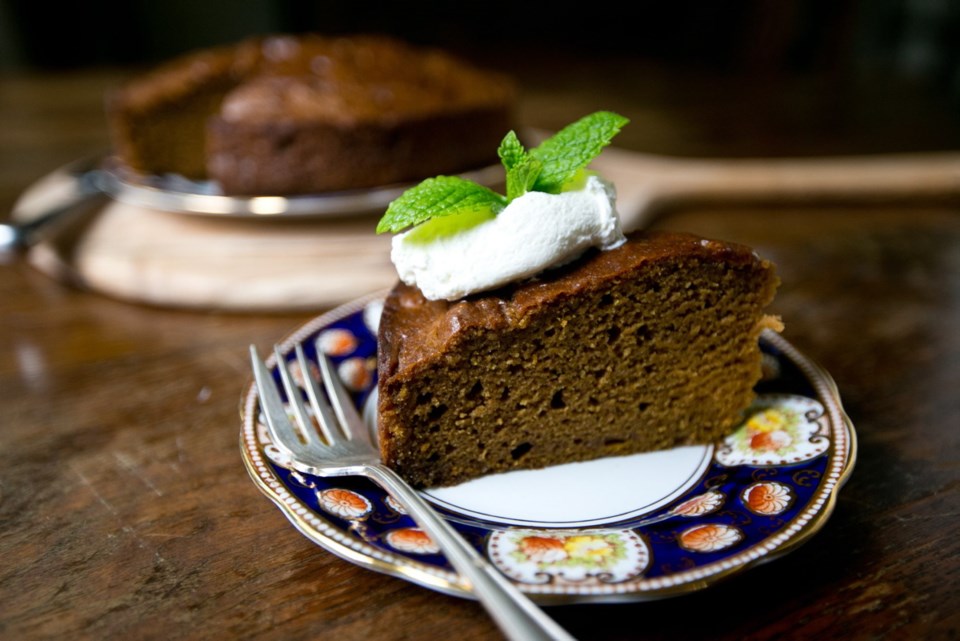Dear Eric: Why do some recipes call for unsalted butter and add salt, for instance, in scones. Why not just use salted butter and leave out the salt? This has puzzled me for many years and I would like to get your opinion.
Jean
Using unsalted butter in baked goods and adding salt, which is sprinkled in to bolster flavour, is all about controlling exactly how much salt the product contains. And that is of particular concern in a commercial bakery, where you’ll want the baked goods to have the same taste each time they come out of the oven.
Salted butter weighing 227 grams (half-pound/about one cup) contains about 3/4 teaspoon salt. I say about because the amount of salt added to salted butter can vary a bit from brand to brand. For example, one type I saw had 75 milligrams of salt per 10 grams, while another had 70 milligrams for that same weight.
Not a huge difference, but in a professional kitchen where kilograms of butter are needed to make, for example, a few hundred scones, if the salt in the butter varies a bit each time, the baked goods will vary, too.
That’s why many professional bakers use unsalted butter and add the salt separately, ensuring each batch of what they’re making will have the same amount of salt each time.
That said, the vast majority of recipes designed for home use simply call for butter, which translates to mean the bricks of salted butter sold in every supermarket. Salted butter was first created to help extend its shelf life in the days before refrigeration, and over the years it has become the type used in most homes.
In baking recipes designed to use salted butter, you will often see them calling for a bit of salt, such as 1/4 or 1/2 teaspoon. That’s because there’s not quite enough salt in the salted butter to create the desired taste.
I use salted butter out of habit, because it’s what I grew up using, and I’ve never have had an issue with my baked goods tasting noticeably different from batch to batch. That’s because a recipe designed for home use yields a much smaller amount than a commercial bakery recipe would. Therefore, you simply would not notice if the butter you used was a tiny bit saltier than the last type you used.
These days, though, whether it’s on a food blog or in a cookbook written by a pastry chef, you see more recipes designed for home use calling for unsalted butter.
In those circumstances, the recipe-writer’s desire isn’t so much about exactly controlling how much salt gets added, but is more about other taste elements.
For example, as I noted in a previous story on this subject, in Food Network star Anna Olson’s best-selling book Sugar, she writes that unsalted butter, which she uses only for baking, has a sweeter, fresher taste that translates beautifully into the baked product. Seems logical, because unsalted butter is also known as sweet butter.
In today’s recipe for pumpkin spice cake, I decided to use unsalted butter and increased the amount of salt I normally added to the recipe by 1/4 teaspoon. Did the cake taste better than the cake I make with regular, salted butter? Perhaps a bit, but it was hard to tell because the slice I ate disappeared very quickly off my plate.
Pumpkin Spice Cake With Maple
Cinnamon, nutmeg and clove add warmth, flavour and heavenly aroma to this easy-to-make pumpkin cake. Drizzling some maple syrup on the warm cake after baking adds a little more sweetness to balance the earthy taste of the pumpkin.
Preparation time: 30 minutes
Cooking time: 55 minutes
Makes: 10 to 12 servings
2 cups all-purpose flour
1 tsp baking soda
1/2 tsp baking powder
1 tsp salt
1 1/2 tsp ground cinnamon
1/2 tsp ground nutmeg
1/4 tsp ground cloves
1/2 cup unsalted butter, at room temperature
1 cup packed golden brown sugar
2 large eggs
1 cup canned pure pumpkin (see Note)
1 tsp pure vanilla extract
1/2 cup buttermilk
• vegetable oil spray
1/4 cup maple syrup
• whipped cream or vanilla ice cream, to taste
Preheat the oven to 350 F. Place the flour, baking soda, baking powder, salt and spices in a bowl and whisk to combine.
Place the butter and brown sugar in the bowl of your stand mixer and beat until well combined. Beat in the eggs, one at a time. Mix in the pumpkin, vanilla and buttermilk. Mix in the flour mixture until just combined. Scrape the sides of the bowl and then mix a few seconds more.
Grease a 9-inch round spring-form cake pan with vegetable oil spray. Spoon the batter into the cake pan. Bake 55 minutes, or until the cake springs back when touched in the centre.
Set the cake on a cooling rack. Slowly drizzle the top of the hot cake with the maple syrup. Now cool cake to room temperature, and then wrap and store at cool room temperature until ready to serve. Cake can be made a few hours before serving.
When time to serve, remove the outer ring from the cake pan, and then slice, plate and serve the cake with a dollop of whipped cream or scoop of vanilla ice cream.
Note: Small cans of pumpkin purée contain 14 ounces (398 ml) of pumpkin, more than you’ll need for this recipe. Freeze the rest, and the next time you’re making a vegetable, lentil or puréed soup, such as carrot or squash, thaw and stir that pumpkin into it.
Eric Akis is the author of The Great Rotisserie Chicken Cookbook (Appetite by Random House). His columns appear in the Life section Wednesday and Sunday.



